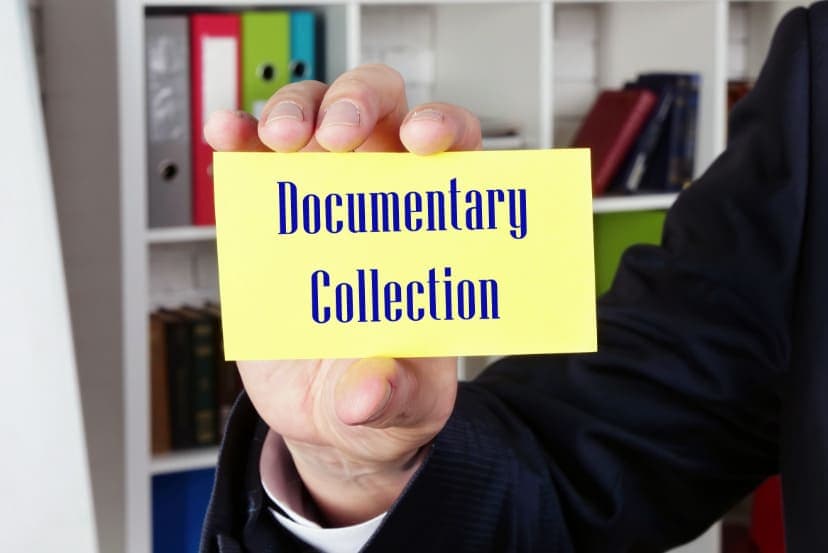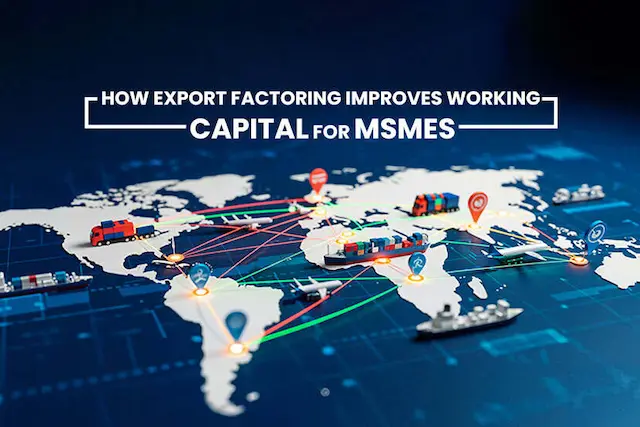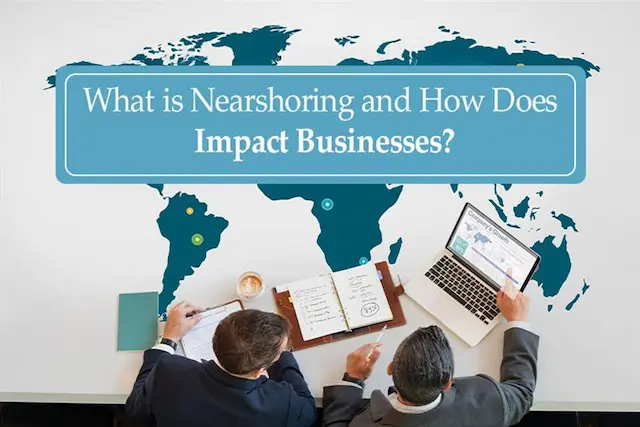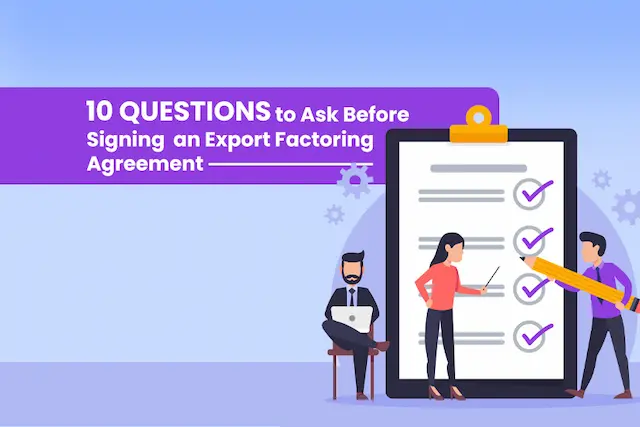In the world of international trade, when goods move between countries, there’s a set process for both the seller (exporter) and the buyer (importer). But, things aren’t always perfect, and sometimes, there are risks like not getting paid or not receiving the goods. To tackle these issues, there’s a helpful method called documentary collection.
It’s like a safety net that makes sure both parties are protected. This method adds a layer of assurance, making sure that payments are made, and goods are delivered as expected. So, in the complex world of global trade, documentary collection steps in to simplify and secure the process for everyone involved.
What is the Documentary Collection Process In International Trade?
Documentary collection is a form of trade financing where an exporter gets paid by an importer. This happens once the financial institutions of both parties swap the necessary documents. Once the goods reach the importer’s place, the exporter’s bank receives payment from the importer’s bank. This payment is in exchange for documents that confirm the transfer of ownership for the shipped items.
In “documentary collection,” the exporter gets paid by the importer for the shipping paperwork. The customer requires this paperwork to go through customs and take ownership of the items. The package includes a commercial invoice, a certificate of origin, an insurance certificate, and a packing list.
As per URC 522/Article 02, documentary collection refers to:
- Financial documents accompanied by commercial documents.
- Commercial documents not accompanied by financial documents.
Who Issues a Documentary Collection?
When an exporter wants to get paid for their goods, they use a documentary collection. They give all the necessary shipping and collection documents to their bank, which is called the issuing bank. This bank then sends these documents to the bank of the importer (the buyer).
The importer’s bank makes the payment to the exporter’s bank, and the exporter’s bank, in turn, transfers the money to the exporter. So, it’s like a step-by-step process where documents and payments move between banks, ensuring a secure and reliable way for exporters to receive their payment for the goods they’ve shipped.
When to Use a Documentary Collection?
If unaware as to when the documentary collection must be used, here’s a clear guide for clarity.
Established Partnership: Documentary collection works best when there’s a strong, long-term relationship between the exporter and the importer.
Political and Economic Stability: The exporter should trust the stability of the receiving country’s political and economic conditions before choosing documentary collection.
Risk Mitigation Alternative: When an open account sale is considered too risky, and the importer isn’t keen on a letter of credit, documentary collection becomes a viable option.
Buyer’s Reliability: Documentary collection is suitable when there’s unwavering confidence in the buyer’s commitment and capability to make payments.
Absence of Foreign Exchange Controls: This method is advantageous when there are no restrictive foreign exchange controls in the importer’s country.
Mutual Agreement: Both parties should agree on using documentary collection as a mutually acceptable payment method.
Transaction Transparency: It is beneficial when both exporter and importer seek a transparent and straightforward transaction process.
Goods with Legal Restrictions: In situations where the nature of the goods makes compliance with legal restrictions crucial, documentary collection can be the preferred choice.
Goods with Legal Restrictions: In situations where the nature of the goods makes compliance with legal restrictions crucial, documentary collection can be the preferred choice.
Consistent Payment History: When the buyer has a history of consistent and reliable payment, documentary collection is a suitable option.
Quick and Efficient Process: Documentary collection is preferred for its simplicity and efficiency, making it a good choice for transactions with minimal complexities.
Two Types of Documentary Collection
Understand the different types of Documentary collections:
1. Documents Against Payment
In this type, the buyer (importer) needs to pay the exact amount mentioned in the shipping documents before they can get their hands on them. It’s like a simple rule: no payment, no paperwork. This way, it’s safer for the seller (exporter), making it a common and straightforward method.
2. Documents Against Acceptance
Now, in this type, the buyer has a bit more time. They still need to pay, but there’s a deadline mentioned. The bank hands over the documents to the buyer once they agree to the payment terms. It’s like saying, “Okay, you can have these papers, but make sure to pay within this timeframe.” This gives a bit more flexibility to the buyer while ensuring everything stays secure and organized.
Understanding the Documentary Collection Process
Here’s a simple guide to understanding the documentary collection process:
Step 1: Agreement and Shipment
The sellers and buyers agree on the payment, shipment details, and decide to use a documentary collection. The sale is finalized. The exporter then ships the goods to the export location, often with the help of a logistics company.
Step 2: Document Preparation and Transmission
The exporter’s bank (remitting bank) gets the necessary documents ready and sends them to the remitting bank. From there, the paperwork is forwarded to the collecting bank, which belongs to the importer.
Step 3: Notification to the Buyer
Upon receiving the documents, the importer’s bank informs the buyer about their arrival. The buyer’s bank then requests payment from the buyer in exchange for the documents.
Step 4: Document Release and Goods Collection
Once the buyer’s bank receives payment or approves the time draft, they release the documents to the buyer. The buyer can then use these documents to claim and collect the goods.
A Simple Example of Documentary Collection
Imagine A and B making a deal. A is selling goods to B, and they agree on how much B needs to pay and where the goods are going. A, the seller (exporter), sends the goods to B, the buyer (importer).
A’s bank gets all the necessary paperwork ready and sends it to B’s bank. When B’s bank gets these papers, they tell A about it and ask B to pay. Once B pays, and the bank says it’s okay, B can finally get the goods. The whole process, called documentary collection, is done when B gets the items, making sure everything happens smoothly and securely between A and B.
Difference Between Letter of Credit and Documentary Collection
If you wondering how letter of credit is different from Documentary collection, have a look at the table below for a clear explanation:
| Feature | Letter of Credit | Documentary Collection | Payment Guarantee |
|---|---|---|---|
| Bank guarantees payment to the exporter. | Yes | No | Yes |
| Payment relies on the importer’s willingness and ability to pay. | No | Yes | Yes |
| Bank Involvement | Involves a high degree of bank involvement. | Limited bank involvement compared to a letter of credit. | Moderate bank involvement. |
| Risk Allocation | Shifts risk from the exporter to the bank. | Risk shared between the exporter and importer; less secure than a letter of credit. | Shifts risk from the exporter to the bank. |
| Complexity | Generally more complex in terms of procedures. | Simpler process, making it more straightforward for parties involved. | Moderate complexity. |
| Costs | Typically involves higher costs due to bank fees and charges. | Generally lower costs as compared to a letter of credit. | Moderate costs. |
| Flexibility | Offers less flexibility for amendments once established. | More flexibility in negotiation and amendments during the process. | Moderate flexibility. |
| Applicability | Often used in high-value or complex transactions. | Suited for established relationships, smaller transactions, and situations where lower risk is acceptable. | Suited for various transaction sizes and risk levels. |
Documentary Collection vs. Open Account vs. Cash Against Documents
Comparing different trade payment methods for more insights and understanding:
| Feature | Documentary Collection | Open Account | Cash Against Documents |
|---|---|---|---|
| Payment Mechanism | Payment upon presentation of specified documents. | Credit extended with agreed-upon payment terms. | Immediate payment upon document presentation. |
| Bank Involvement | Involves banks to a certain extent, but less than a letter of credit. | Minimal bank involvement in routine transactions. | Banks may play a role, but less than in a letter of credit. |
| Risk Distribution | Risk shared between exporter and importer. | Higher risk for the exporter, as payment depends on the buyer’s creditworthiness. | Lower risk, as payment is received before releasing documents. |
| Flexibility | Offers some flexibility in negotiation and amendments. | Provides flexibility in terms but relies on trust between parties. | Less flexible due to the immediate payment nature. |
| Suitability | Suitable for established relationships and lower-risk transactions. | Common in routine, ongoing business with trusted partners. | Ideal for quick, one-time transactions with trusted parties. |
| Documentation | Requires specific documents for payment release. | Less stringent document requirements; relies on trust. | Relies on documents for payment but with a faster turnaround. |
| Costs | Generally lower costs compared to a letter of credit. | Lower transaction costs but potential for bad debt costs. | May involve fewer costs due to immediate payment. |
Advantages of Documentary Collection Over Others
Learn about some of the major advantages of Documentary collection:
Secure Export Collection: Benefit from the bank’s secure and reliable assistance in handling export collections.
Simplicity and Speed: Enjoy a straightforward, quick, and cost-effective process compared to Letters of Credit (LCs).
Streamlined Document Management: Experience simplified document management throughout the transaction.
Quick Payments: Receive payments at an accelerated pace, enhancing cash flow for the exporter.
Seller’s Ownership Control: Retain ownership of goods until payment is received, providing a safeguard.
Payment Guarantee: Benefit from a payment guarantee, ensuring financial security for exporters.
Global Business Expansion: Expand business globally with the flexibility and support offered by documentary collection.
Record-Keeping for Collections: Maintain a systematic record of overdue collections for efficient financial tracking.
Cost-Effective Solution: Enjoy a cost-effective alternative to Letters of Credit, reducing financial burdens.
Conduct Monetary Transactions: Facilitate monetary transactions seamlessly within the framework of documentary collection.
Disadvantages of Documentary Collection
With advantages, there are some disadvantages too that you must keep in mind to make a more informed and wiser choice.
Higher Non-Payment Risk: Increased risk of non-payment, particularly if payment is deferred.
Limited Bank Role and Guarantee: Banks have a restricted role, and payments are not assured. Shipping paperwork and buyer’s payment are not guaranteed.
Cash Flow Strain for Exporters: Exporters may face cash flow challenges, especially with extended credit terms in the bill of exchange.
Exposure to FX Risk: Continuous exposure to foreign exchange (FX) risk from the sale contract to payment.
Loss of Control over Goods: Relinquishing control over goods before payment, posing a risk of non-payment on the due date.
Conclusion
The documentary collection process in international trade serves as a vital tool, balancing the complexities of global transactions. Offering a secure and streamlined approach, it ensures both exporters and importers benefit from a trustworthy method of payment and delivery. While it simplifies the procedure, providing advantages such as quick payments, cost-effectiveness, and global expansion opportunities, it’s essential to acknowledge potential drawbacks like non-payment risks and limited bank guarantees.
Nevertheless, when utilized judiciously based on established relationships and lower-risk scenarios, documentary collection proves to be an efficient and adaptable solution for facilitating trade in the dynamic landscape of international commerce.
FAQs
Who acts as the drawer in documentary collection?
In documentary collection, the seller, referred to as the drawer, takes the initiative. The drawer ships the goods and generates the necessary paperwork for the buyer while initiating the collection order. Following this, the drawer forwards the required documents and the collection order to their bank, known as the remitting bank.
Who serves as the drawee in documentary collection?
The drawee in documentary collection is the individual or business upon whom a draft is drawn. In this scenario, the drawer instructs the drawee, typically the buyer, to make a specified payment to the payee, either to the payee directly, to the payee’s order, or to the bearer of the draft.
How does documentary collection function as a payment method?
When the importer and exporter finalize a business agreement, and after the goods are shipped, the exporter provides the necessary documents to their bank. Subsequently, the importer’s bank receives and presents these documents. Once this process is complete, the exporter receives payment for the transaction.
What sets apart documentary collection from documentary credit?
A letter of credit involves a binding contract where the buyer’s bank commits to paying the seller’s bank upon the delivery of products, adhering to precise documentation requirements. On the other hand, in a documentary collection, the bank is not obligated to pay the seller or exporter if the buyer chooses not to proceed with the purchase.
What are the documentary collection types?
There are two main types: Documents against Payment Collection (D/P): Importers receive delivery documents only upon making the payment. Collection of Documents Against Acceptance (D/A): Delivery papers require either acceptance of a Bill of Exchange or a payment guarantee before being handed over.
Also Read : Understanding ECGC Insurance: Protection for International Trade





